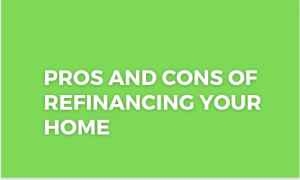Many countries of the world lifted rent control because it is thought to be an old fashioned way. In the states where rent control is still being practiced, there is a limit to the amount of rent increase that should occur on the existing tenants in a particular building. On the other hand, these regulations do not usually apply to newer buildings and any new tenants. The landlord is allowed to raise rent to suit the market demands. Similarly, the laws are meant to protect the already existing tenants and people who belong to a certain group such as the elderly.
Pros:
1.
The maximum increase in rent is capped. Occupants of rent-controlled buildings get to save thousands of dollars because of this law. In recent times, the market demands increases at a faster rate and so does the rent.
2. Mitigates the risk of being unable to afford your apartment over time. This is because most of the time, the rent will keep increasing and may actually reach a point where it exceeds your income. In this case, if your income is growing at a slower rate, you will definitely not be able to afford the apartment.
3. Eviction protection. The rent control laws include regulations on evictions. For instance, the landlord has to provide proper proof which clearly shows the reasons for eviction.
4. Offers protection for repair situations. If the landlord is not performing the required repairs, then the tenant in the rent-controlled area can report the matter to a local committee. Afterward, the tenant receives a legal right to do the repairs and withhold a certain amount of rent.
5. Defuses any public protests on high rents. Members of the public may take it to the streets when there is a rapid increase in rents. Rent control can greatly help to avoid such situations.
6. Housing is made affordable for low and moderate-income employers. Some people struggle to pay rent because their income is not sustainable. This may get worse if the rent keeps on going up. Therefore, rent control works in the best interest of low-income workers.
7. Maintains stability in neighborhoods. Most people can comfortably live in rent-controlled areas. They know for a fact that they can afford that particular apartment. For this reason, they will not have to move out because the rent is too high for them.
8. Encourages diversity. The cities can maintain a diverse population because most people can actually afford the cost of living. In this case, certain areas and neighborhoods are not just dominated by rich people.
9. Long-term tenants take good care of the property. People who know they are there to stay not only materially improve the buildings but also maintain them. This leads to the preservation of properties and increasing value.
10. Re-signing lease protection. Some renters may feel compelled to resign their leaseback into the market when the prices go up. The rent control laws protect tenants from this.
Cons:
1. Removes market efficiency. Since there is a group of people who pay rent at a lower price, all the others who have no access to this privilege are forced to pay much more than normal.
2. Landlords can’t charge rent at market price. Some landlords are forced to leave money on the table following rent control limitations. Even if rent in the community goes up to 6%, there is nothing you can do when you are only allowed a maximum of 2%.
3. Discourages landlords from improving their properties. Many of the landlords in the rent-controlled areas usually have no interest in repairing or upgrading their properties. This can cause housing quality issues.
4. Low property tax bills. Some critics claim that rent control lowers the market value of the properties. For this reason, there are lower tax bills compared to areas where this law does not apply.
5. Renters tend to cling on to their apartments in rent-controlled areas. People living in such a building will rarely move out. This reduces the available rental stock and in turn results in the raised market price for other units.
6. Discourages developers from investing in the rental properties. Many of the developers and landlords avoid the properties in rent-controlled areas.
7. Forces landlords to charge higher prices on the unregulated units. They do this to compensate for the low rent they receive from the rent-controlled properties.
8. There is really no guarantee that the regulated apartments go to the needy people. There are several people living in rent-controlled apartments yet they receive an income that is at $100,000 in a year or even more.
9. People who start out as low-income can earn more and no longer fit in the category of the people who are supposed to benefit from rent control. This only shows that this program is losing its value.
10. Landlords are not able to recoup their costs. In this case, a number of landlords can’t really afford to maintain the apartment complex.



